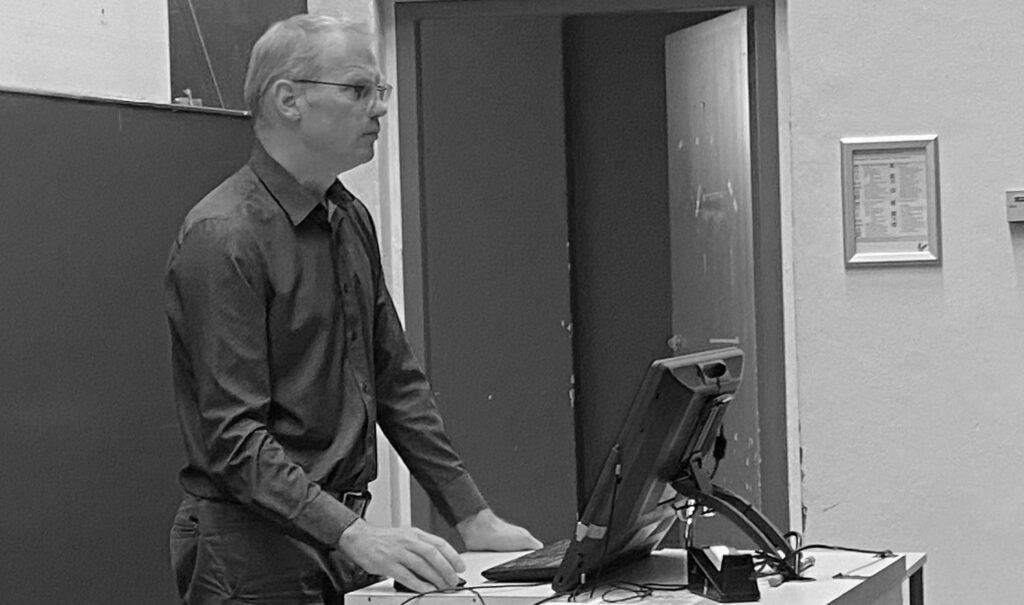Amsterdam, 12 April 2024 – Guest lecture by Kees Boersma, professor of socio-technical innovation and societal resilience. Vrije Universiteit Amsterdam, W&N Building De Boelelaan 1085, D107.
Audience: Computer Science, Information Sciences, AI master students in the ICT4D elective module (96 master students), and project partners from Babafla and UDS.
Amsterdam, 12 April 2024 – In this lecture, Kees Boersma explains how disasters are actually not natural. Hazards such as earthquakes and floods are natural events, but it is society who turns a hazard into a disaster. A disaster can be seen as a magnifying glass in society, as it shows clearly how society is organized. Actors in disaster are, on one hand, governments, formal response agents such as NGOs etc but also, on the other hand (unexpected) civil actors, communities, that pop up, spontaneously, as grassroots movements to help people in need, after a hazardous event.
Kees Boersma explains how disasters can be considered multidimensional events. The study of disasters from the social sciences perspective is to analyse the social relations that are involved between the actors. Resilience, or community resilience, is the ability of people and their communities to absorb and overcome the outcomes of the events.

In disaster governance, as Kees Boersma explains, two opposing doctrines can be observed: the formal one, called 3C: chaos, command and control. Control is considered needed, to bring the situation back to normal: this is the top-down approach, usually adopted by the government and (formal) agencies, shortly after a disaster. Informal action, unexpected community local agency, according to this doctrine, by citizens is seen as a nuisance, and a threat to control and order.
In contrast, an alternative, informal doctrine for disaster management and governance exists in parallel, dubbed 3-C: Continuity, coordination and cooperation. This is a community-based grassroots doctrine. Improvisation, shared operational facilities. Information systems become part of stakeholder negotiation. Citizens become active actors from this perspective. Digital technologies often play an important role in the coordination of actions, especially in the 3-C approach.
One key (research) question is : how can we design/use digital technologies for the mitigation and response to disasters? And a subquestion can be: How can digital technologies be designed such that they support grassroots initiatives and help citizens in a crisis situation?
Digital humanitarians network is a community or network between the formal humanitarian respondents and the volunteers (technical communities). They aim to bridge the gap between the formal and the informal actors. One example of the use of digital technologies in this approach is the Ushahidi project. It used specifically designed digital technologies for the given context, to facilitate communication between various actors and allowed crowdsourcing in times of a disaster.
Suggested reading: Patrick Meier, Digital Humanitarians see: http://www.digital-humanitarians.com/
European research projects in H2020, related to this subject: Links project, and SYNERGIES Disaster-Resilience Societies project.
